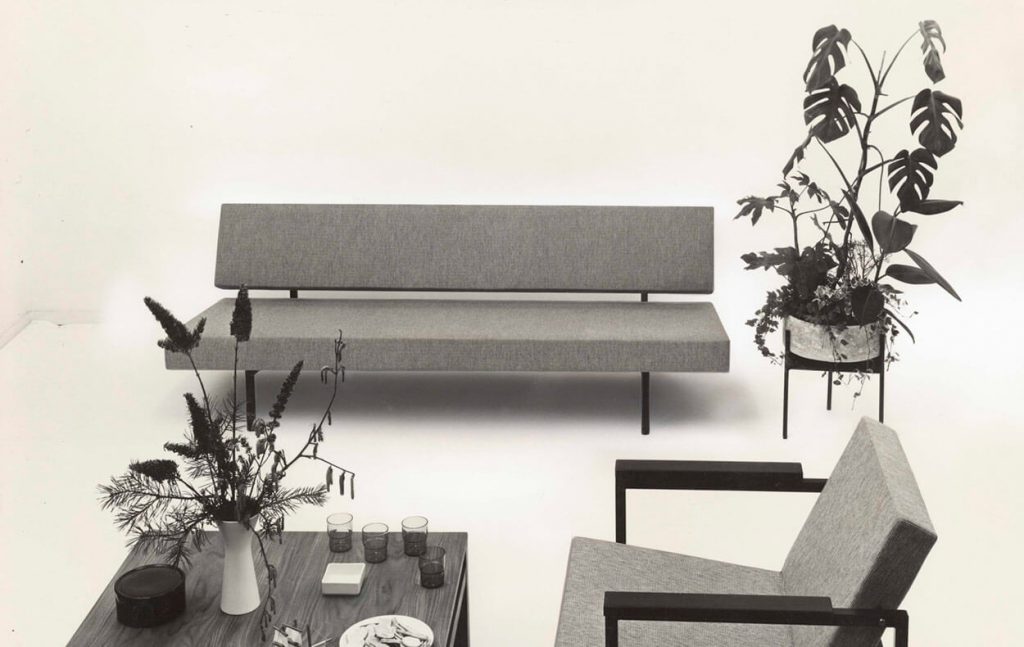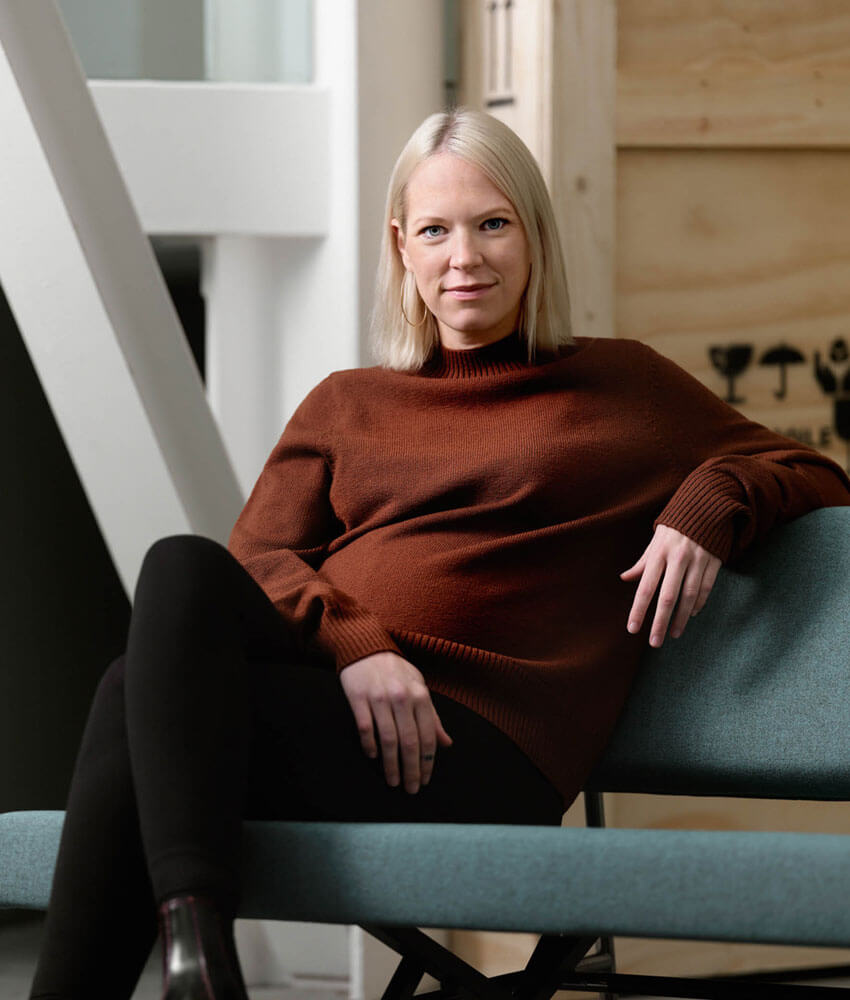Tribute to Visser
Jan des Bouvrie, Richard Hutten, Carolina Wilcke & Reinier Bosch,
Piet Hein Eek, Kiki van Eijk, Marcel Wanders and Sabine Marcelis
pay tribute to the work of Martin Visser
Jan des Bouvrie, Richard Hutten, Carolina Wilcke & Reinier Bosch, Piet Hein Eek, Kiki van Eijk, Marcel Wanders and Sabine Marcelis pay tribute to the work of Martin Visser

This year we celebrate the 60th anniversary of the furniture collection that leading Dutch designer Martin Visser (1922-2009) created for Spectrum in 1960. To honour his contribution to design history, Jan des Bouvrie, Richard Hutten, Carolina Wilcke & Reinier Bosch, Piet Hein Eek, Kiki van Eijk, Marcel Wanders and Sabine Marcelis pay tribute to his work.
Martin Visser’s 1960 collection for Spectrum produced many design classics, including the famous BR 02 sofa bed. In Tribute to Visser, seven well-known Dutch designers created new designs, inspired by a Visser piece of furniture. The exhibition ‘The eye-opening sofa bed’ the Centraal Museum in Utrecht showcases the results of the designers along with the original furniture by Martin Visser.
Designers
Click on the portraits of the designers to see their tribute to Martin Visser!
The making of at Gallery Eenwerk
Martin Visser & Spectrum
In 1954, ‘t Spectrum asked designer and art collector Martin Visser to join them as head of their design department. It turned out to be a brilliant decision. Visser’s innovative ideas and his inquisitive, open spirit not only gave the company a new face, but also resulted in Dutch design classics that were the talk of the town and have remained in production to this day.

BR 02 slaapbank
Visser’s 1960 BR 02 Sofa Bed is his most famous furniture design. BR stands for “bank om te rusten”, or “sofa for resting”. Visser started designing sofas and sofa beds in 1957. In his early models – Sluis, Sluiskil, Nieuw Sluis and BR 01 – he was still looking for the right way to attach the backrest and seat, and used square instead or round tubing for the frame.
The comfort of the BR 02 sofa is the result of the angle of the seat and the backrest. Visser achieved this angle by creating a bend in the rear legs and tilting the seat. A clever mechanism enables the seat to be easily adjusted to a horizontal position, creating a single-person sofa bed. An important difference compared to previous versions are the chromed sides of the frame forming the legs and back. The connecting element of the frame between these is black, and the contrast with the shiny chrome renders it almost invisible. As a result, the frame looks light and airy, and the chair and back appear to float in space.
Various contemporaries designed sofas in similar styles, but Visser’s BR 02 remained unrivalled thanks to its perfect proportions and well-contrived details. It is no surprise, then, that connoisseurs consider Visser’s second “sofa for resting” the archetypical model of its kind.

A no-nonsense design classic
The use of a round tube frame and a black middle segment are distinguishing characteristics of Visser’s sofa bed. However, the biggest reason for the BR 02’s success was Visser himself. With his designs, Visser represented the wider wave of innovation in art, architecture and interior design in the post-war Netherlands. As the head of the furniture department at De Bijenkorf (a luxury department store) immediately following World War II, he was already creating exhibitions that were the talk of the town under the motto of “Ons Huis ons Thuis” (Our House, Our Home) with such designers as Gerrit Rietveld, Constant Nieuwenhuys, Aldo van Eyck and Benno Premsela. Visser’s contributions to Stichting Goed Wonen (the Good Living Foundation) were significant as well: his furniture was often included in the model homes created by this foundation for the purpose of improving domestic living. Stores like De Bijenkorf, Metz & Co. and Bas van Pelt sold this kind of furniture. By showing how no-nonsense designs could also be very comfortable, Visser became a highly regarded figure by a generation with a modern attitude to life. The fact that cartoonist Jan Kruis gave the BR 02 a permanent spot in the home of his weekly comic Jan, Jans en de kinderen (Jack, Jacky and the Juniors) illustrates the broad popularity of this no-nonsense Dutch design.
Tribute to Visser magazine
Browse our magazine about Tribute to Visser below, or download the magazine here. Read all about the influence of Martin Visser on the Spectrum collection and the background of the tributes that the seven Dutch designers paid to his work.








